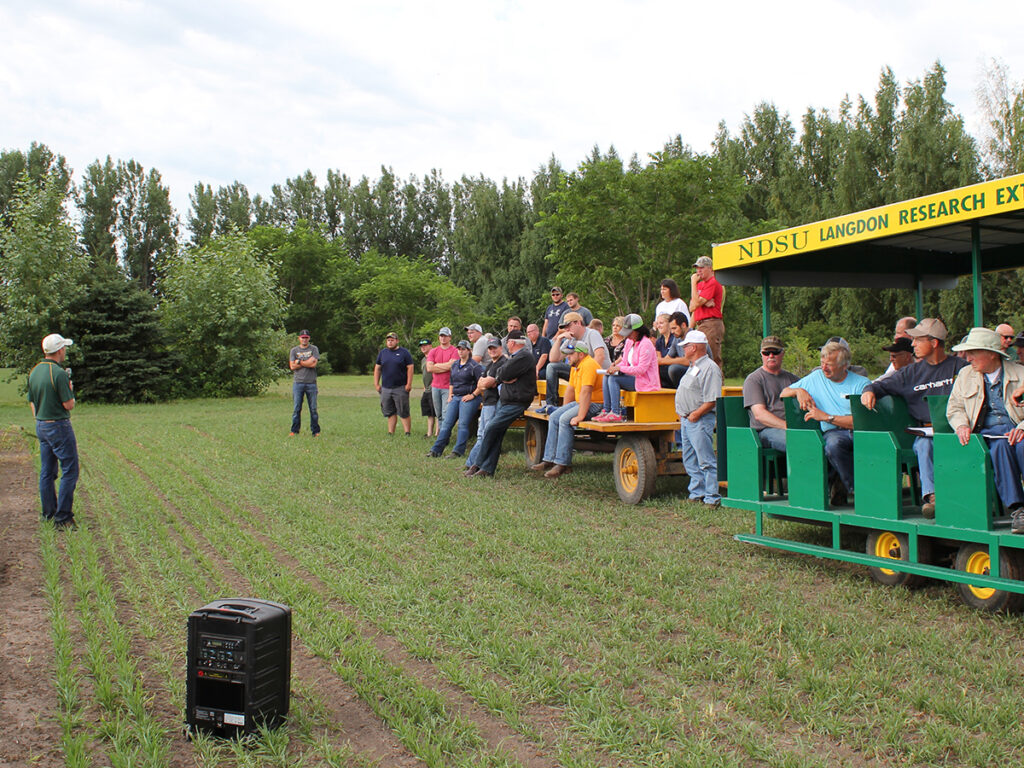North Dakota still relies on face-to-face extension

WINNIPEG — Burke County in the northwestern corner of North Dakota is not a busy place.
The population in the county, which is located south of Estevan, Sask., is only 2,134, says the U.S. Census Bureau.
Related stories:
Despite its small size, Burke County has a full-time agricultural extension agent.
Read Also


Pending Canada Post service disruption
Delivery of our paper editions may be disrupted as of May 23 by the ongoing labour dispute between Canada Post…
His name is Dan Folske.
Any farmer in the county who needs help with a disease in their spring wheat crop or has a problem with their cattle herd can call Folske and ask for assistance.
There’s someone like him in most of the 53 counties across the state.
“North Dakota has a very strong extension program,” said Randy Mehlhoff, director of the Langdon Research Extension Center for North Dakota State University (NDSU).
Langdon is about 200 kilometres southwest of Winnipeg.
“We have county extension agents in every county,” Mehlhoff added.
“I call them ‘boots on the ground’ people.”
Those boots on the ground work at NDSU extension offices. That’s because North Dakota State is a land grant university and has a mandate distinct from those of other U.S. universities.
“All universities engage in research and teaching, but the nation’s more than 200 land-grant colleges and universities have a third critical mission — extension,” says www.Landgrantimpacts.org.
“Extension means reaching out.”
Mehlhoff shared an example to explain how the system works in North Dakota.
If a farmer in Cavalier County notices something odd in his canola field, such as an unfamiliar disease, he could call the county agent. That extension agent would visit the farm and scout the crop with the grower.
If the agent was still baffled, they would contact a specialist who works at one of the seven NDSU research extension centres in the state. There are two such specialists at Langdon.
“Their No. 1 job is to support the county extension agents,” Mehlhoff said, with the goal of helping the producer solve the problem.
“We just give them (farmers) alternatives…. We let them make the decision.”
There are larger counties in North Dakota where the population is much higher than 2,134. However, in most counties the extension agent is well known to local farmers.
That personal, face-to-face approach to ag extension is like turning back the clock to the 1970s or 1980s on the Prairies.
Nowadays, specialists with provincial agricultural departments do “one to many” extension, said a Manitoba Agriculture employee. They’re more likely to speak to a group of farmers at a conference, a trade show or online in a webinar.
Some Prairie extension reps do go to farms and talk directly to producers, but most livestock and crop extension specialists for provincial governments work in regional offices. North Dakota would likely have more extension agents than a province such as Saskatchewan.
So, there are boots on the ground in Canada, but fewer boots per acre.
There was a time when ag professors at NDSU would have a dual role. They would do research on soil fertility, for instance, and also extend that research to farmers.
That’s no longer the case.
“Nowadays, when we hire somebody, it’s either totally research or totally extension,” Mehlhoff said.
“Here (in Langdon), I’ve got an extension specialist in soil health — and that’s all he does (communicate with farmers).”
North Dakota’s mission to reach out to farmers and rural people does come with a cost. The state government and counties share the salaries for county extension agents 50-50.
That means taxpayers are on the hook, but rural residents do get a service in return. Many counties have an extension agent who specializes in family and community wellness, including things such as the local 4H club.
Since the university is responsible for extending ag research to farmers, it means commodity groups in North Dakota don’t need to hire agronomists or livestock extension specialists.
The North Dakota Wheat Commission only has five employees, who manage the levy on the six to seven million acres of wheat grown in the state.
The commission provides check-off dollars to support NDSU research in areas such as wheat pests and diseases.
When the research is complete, NSDU extension agents communicate the findings to producers.
That’s a different model than what happens on the Prairies.
SaskPulse might fund a University of Saskatchewan professor for a two-year project, maybe to study a soil disease in lentils.
Who shares the findings of that research is more confusing in Canada. It could be an agronomist with SaskPulse, a provincial government employee, possibly the university researcher or someone else.
Over the last decade or so, commodity groups in Canada have employed more agronomists and extension specialists, said the manager of a group on the Prairies. The organization recognized a void in extending research to farmers and hired someone to fill the gap.
Getting research to growers and encouraging farmers to adopt best practices is much more challenging than doing the research, he said.
Mehlhoff has been working at North Dakota State for 37 years. With the internet, YouTube, Facebook, webinars and Zoom, communicating with farmers has changed drastically over the last 15 years.
It’s now difficult to get the new generation of farmers to come to a meeting at the Langdon research centre to learn about flea beetles or some other agronomic issue.
Those younger producers rely on modern tools to manage their farms. Nonetheless, most people prefer to talk to someone and get answers face to face.
“The county agent plays an important role,” Mehlhoff said.
“(Farmers) might pull their phone out to get information, but they still like to have someone (come to their farm) and have a look.”
Contact robert.arnason@producer.com
Source: www.producer.com


